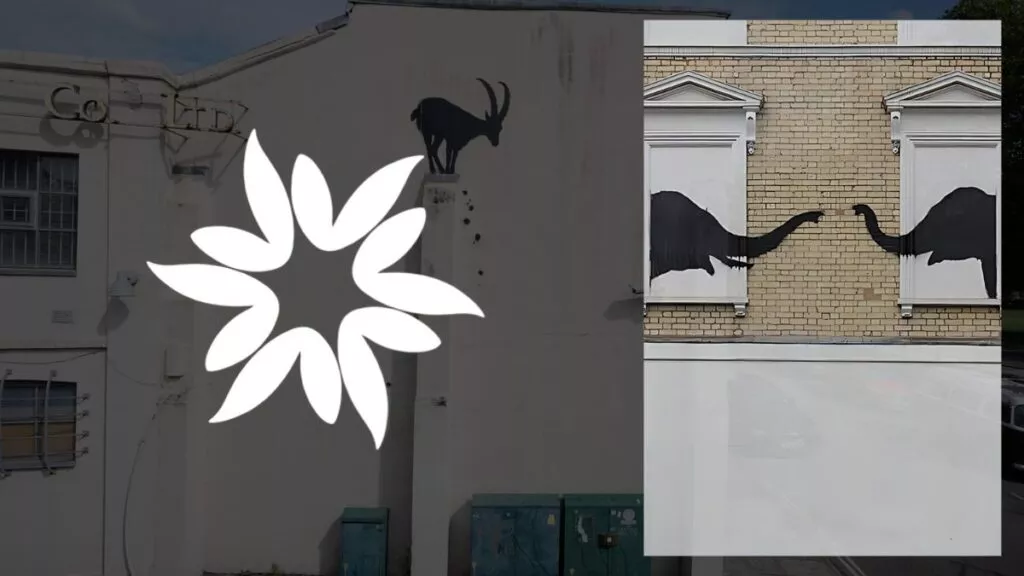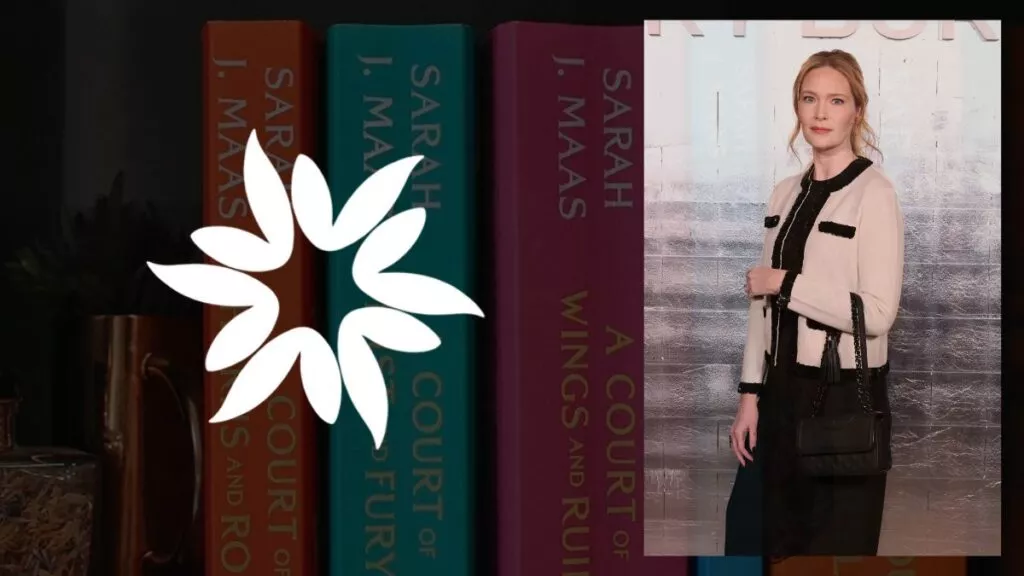Art has always helped shape how the film looks and feels. Filmmakers often get ideas from famous paintings and other artworks to create beautiful and meaningful stories.
Key Takeaways
- Films inspired by classic paintings use the visual styles and themes of the artworks to create more compelling and memorable scenes.
- Drawing from iconic art, movies add deeper emotional layers, making stories more impactful and resonant with viewers.
- The blend of film and art introduces audiences to classic artworks, enriching their cultural knowledge and appreciation.
What Is Film in Art?
Film in art refers to the way movies incorporate elements of visual arts to enhance storytelling, evoke emotions, and create visually stunning scenes.
This integration can take many forms, including direct references to famous paintings, the use of specific artistic styles, and the film’s overall aesthetic approach. Here are some key aspects:
- Visual References: Films often include scenes that directly mimic famous artworks. For example, Alfred Hitchcock’s Psycho features a house inspired by Edward Hopper’s painting House by the Railroad. This creates a specific mood and adds depth to the visual storytelling.
- Artistic Styles: Directors may adopt certain artistic styles to influence the film’s visual language. For instance, the use of light and shadow in film noir is heavily influenced by the dramatic lighting found in Caravaggio’s paintings.
- Aesthetic Choices: A film’s overall look can be inspired by art movements. Stanley Kubrick’s Barry Lyndon uses natural lighting and compositions reminiscent of 18th-century paintings by William Hogarth to achieve historical accuracy and visual beauty.
- Thematic Resonance: Sometimes, films draw on the themes and emotions of famous artworks to deepen their narrative. For example, the isolation and melancholy in Edward Hopper’s paintings often resonate with the themes of loneliness and introspection in films like Shadow of a Doubt.
- Cinematic Techniques: Filmmakers use techniques such as framing, color palettes, and composition that are commonly found in the visual arts. This not only enhances the aesthetic quality of the film but also engages viewers on a deeper, more emotional level.
Top 20 Films Inspired by Iconic Art
Films often find inspiration in famous works of art, creating a rich visual experience for the audience.
Here are 20 films that have been directly influenced by iconic paintings and sculptures, blending the worlds of cinema and fine art in unique and compelling ways.
1. Psycho (1960) – Edward Hopper’s House by the Railroad
Alfred Hitchcock’s classic horror film Psycho was significantly influenced by the works of Edward Hopper, especially in the design of the iconic Bates house.
The Bates Mansion in Psycho was directly inspired by Hopper’s painting House by the Railroad (1925).
This painting shows a lonely Victorian house near a railroad track, creating feelings of isolation and timelessness.
The Gothic architecture and eerie atmosphere in both the painting and the movie are very similar.
Hitchcock used this house to show Norman Bates’ twisted mind and further portray the theme of loneliness in the movie.
2. Mean Streets (1973) – Caravaggio’s The Calling of St Matthew
Martin Scorsese’s Mean Streets draws inspiration from Caravaggio’s dramatic use of light and shadow.
Scorsese admired Caravaggio’s ability to capture dramatic moments with intense realism and emotional depth.
In Mean Streets, the bar scenes, filled with strong lighting and moral complexity, reflect Caravaggio’s style.
The influence is evident in how Scorsese sets up his characters and the raw energy of New York’s Little Italy.
3. Barry Lyndon (1975) – William Hogarth’s The Happy Marriage VI: The Country Dance
Stanley Kubrick’s Barry Lyndon is famous for its use of natural lighting and visual compositions that look like 18th-century paintings.
Kubrick was influenced by the works of William Hogarth, especially The Country Dance.
The film’s careful attention to period details and its use of natural light to mimic the look of Hogarth’s paintings create a realistic and immersive historical setting.
Kubrick’s framing and composition often copy the style and tone of Hogarth’s works, adding to the film’s authenticity and visual beauty.
4. Days of Heaven (1978) – Andrew Wyeth’s Christina’s World
Terrence Malick’s Days of Heaven shows vast, golden landscapes similar to Andrew Wyeth’s Christina’s World.
This artistic influence enhances the film’s visual poetry and deep themes, highlighting its characters’ isolation and inner struggles.
Wyeth’s painting, with its wide fields and solitary figure, resembles the film’s depiction of the American Midwest and the emotional battles of its characters.
5. The Adventures of Baron Munchausen (1989) – Sandro Botticelli’s The Birth of Venus
Terry Gilliam’s fantasy film The Adventures of Baron Munchausen features a scene directly inspired by Botticelli’s The Birth of Venus.
Uma Thurman’s portrayal of Venus coming out of a shell is a striking homage to the famous painting.
This scene captures the ethereal beauty and classical elegance of Botticelli’s work, adding a touch of Renaissance art to the film’s whimsical and fantastical story.
6. The Shining (1980) – Diane Arbus’ Identical Twins, Roselle, New Jersey
Stanley Kubrick’s The Shining includes visual references to Diane Arbus’ photograph Identical Twins, Roselle, New Jersey.
The eerie image of the twins in the Overlook Hotel mirrors Arbus’ haunting portrait, contributing to the film’s unsettling atmosphere.
The photo of the twin girls, with their similar dresses and expressionless faces, creates a creepy and uncanny effect that enhances the horror in Kubrick’s film.
7. A Clockwork Orange (1971) – Vincent van Gogh’s Prisoners Exercising
In A Clockwork Orange, Kubrick references Vincent van Gogh’s Prisoners Exercising during a prison scene where inmates walk in circles.
This visual nod shows themes of confinement and repetitive violence, echoing van Gogh’s feelings of isolation during his time in a psychiatric hospital.
The scene mirrors the circular, repetitive motion seen in van Gogh’s painting, highlighting the monotonous and oppressive nature of the prison environment.
8. Marie Antoinette (2006) – Jacques-Louis David’s Napoleon Crossing the Alps
Sofia Coppola’s Marie Antoinette creatively combines pop culture with historical elements.
The film includes a scene inspired by Jacques-Louis David’s Napoleon Crossing the Alps, symbolizing the grandeur and eventual downfall of the French queen.
This artistic reference emphasizes the regal and dramatic aspects of Marie Antoinette’s life, aligning her story with the heroic imagery of Napoleon.
9. Melancholia (2011) – John Everett Millais’ Ophelia
Lars von Trier’s Melancholia features a scene where Kirsten Dunst floats in water, surrounded by lilies, directly referencing Millais’ painting Ophelia.
This imagery captures the film’s themes of depression and impending doom.
The serene yet tragic image of Dunst in the water evokes the same sense of beauty and melancholy found in Millais’ depiction of Ophelia from Shakespeare’s Hamlet.
10. Dreams (1990) – Vincent van Gogh’s Wheatfield with Crows
Akira Kurosawa’s Dreams includes a segment inspired by van Gogh’s Wheatfield with Crows.
The film’s exploration of vivid, dream-like scenarios pays homage to van Gogh’s emotional and turbulent artistry.
The vibrant and intense imagery in this part of the film reflects van Gogh’s dramatic use of color and his expressive portrayal of nature.
11. Shadow of a Doubt (1943) – Edward Hopper’s Realism
Alfred Hitchcock’s Shadow of a Doubt is known for its portrayal of small-town American life, drawing inspiration from Edward Hopper’s realist paintings.
The film’s settings echo Hopper’s detailed and atmospheric depiction of American society, enhancing the film’s suspense as the seemingly idyllic town becomes the backdrop for a dark and thrilling narrative.
12. Scarlet Street (1945) – Noir Influences from Hopper
Fritz Lang’s Scarlet Street exemplifies the film noir genre’s aesthetic, which owes much to Edward Hopper’s paintings.
The film’s use of light and shadow, as well as its urban settings, reflect Hopper’s exploration of loneliness and moral ambiguity.
Lang’s cinematic techniques create a visual style that mirrors Hopper’s portrayal of mid-20th-century American life.
13. The Killers (1946) – Hopper’s Nighthawks
Robert Siodmak’s The Killers is another film noir classic influenced by Edward Hopper’s Nighthawks.
The film’s bar scenes and the interplay of light and shadow bear a striking resemblance to Hopper’s painting, creating a moody and atmospheric experience that emphasizes themes of crime and existential angst.
14. Force of Evil (1948) – Hopper’s Urban Landscapes
Force of Evil, directed by Abraham Polonsky, visually reflects Edward Hopper’s pessimistic view of urban America.
The film’s stark lighting and architectural elements depict New York City in a way that mirrors Hopper’s realistic and often bleak style.
This visual approach underscores the film’s themes of corruption and moral decay.
15. The Naked City (1948) – Hopper’s Urban Isolation
Jules Dassin’s The Naked City captures the essence of Edward Hopper’s portrayal of urban isolation.
The film explores New York City’s hidden stories and lonely individuals, reflecting Hopper’s focus on solitude amidst a bustling metropolis.
Such a realistic depiction of the city and its inhabitants aligns with Hopper’s thematic exploration of urban life and personal isolation.
16. The Window (1949) – Hopper’s Suburban Scenes
Ted Tetzlaff’s The Window draws inspiration from Edward Hopper’s suburban paintings.
The film uses a familiar setting and atmospheric tension to tell the story of a boy who witnesses a murder.
This visual style, with its detailed depiction of suburban life and its underlying suspense, enhances the film’s narrative and mirrors Hopper’s artistic focus on the ordinary and the ominous.
17. Inception (2010) – M.C. Escher’s Relativity
Christopher Nolan’s Inception draws heavily from M.C. Escher’s lithograph Relativity.
The film’s dream sequences feature impossible architecture and gravity-defying structures that echo Escher’s exploration of perspective and infinity.
Nolan’s use of these visual elements creates a surreal and disorienting experience that enhances the film’s themes of reality and illusion.
18. The Exorcist (1973) – René Magritte’s The Empire of Light
William Friedkin’s The Exorcist includes scenes influenced by René Magritte’s The Empire of Light painting.
The film’s visual contrast between light and dark mirrors Magritte’s enigmatic style, contributing to its unsettling atmosphere and enhancing its horror elements.
19. The Lion King (1994) – Michelangelo’s Creation of Adam
Disney’s The Lion King contains a moment inspired by Michelangelo’s Creation of Adam.
The iconic scene where Simba is lifted on Pride Rock mimics the gesture and grandeur of Michelangelo’s fresco, symbolizing the birth of a future king and underscoring the film’s themes of destiny and leadership.
20. Skyfall (2012) – J.M.W. Turner’s The Fighting Temeraire
Sam Mendes’ Skyfall features a nod to J.M.W. Turner’s painting The Fighting Temeraire.
The film includes a shot of the painting in the National Gallery, drawing parallels between the themes of legacy and obsolescence in both the artwork and the James Bond franchise.
This reference adds depth to the film’s exploration of Bond’s relevance in a changing world.
The Timeless Influence of Art on Film
The connection between art and film creates a powerful blend of visual storytelling.
By drawing inspiration from iconic artworks, filmmakers enrich their narratives with deeper emotional and visual layers.
Movies like Psycho, Mean Streets, and Barry Lyndon show how art can influence the setting, mood, and themes, making them more compelling and memorable.
This blend not only pays tribute to classic art but also introduces it to new audiences, allowing them to appreciate the timeless beauty and meaning behind these masterpieces.
As cinema continues to evolve, art’s inspiration will remain a vital source of creativity, ensuring that both mediums continue to inspire and captivate viewers around the world.







